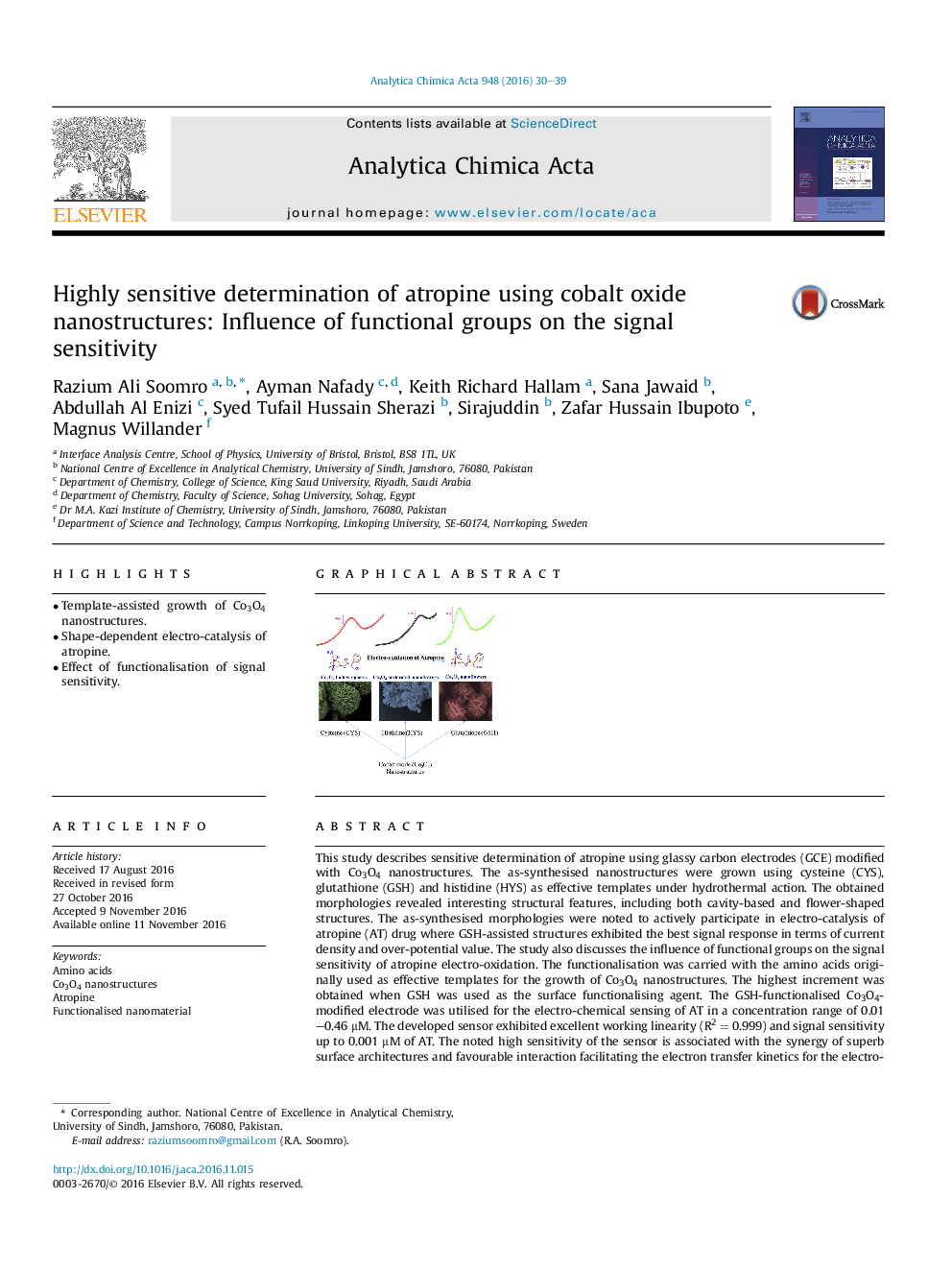| Article ID | Journal | Published Year | Pages | File Type |
|---|---|---|---|---|
| 5131282 | Analytica Chimica Acta | 2016 | 10 Pages |
â¢Template-assisted growth of Co3O4 nanostructures.â¢Shape-dependent electro-catalysis of atropine.â¢Effect of functionalisation of signal sensitivity.
This study describes sensitive determination of atropine using glassy carbon electrodes (GCE) modified with Co3O4 nanostructures. The as-synthesised nanostructures were grown using cysteine (CYS), glutathione (GSH) and histidine (HYS) as effective templates under hydrothermal action. The obtained morphologies revealed interesting structural features, including both cavity-based and flower-shaped structures. The as-synthesised morphologies were noted to actively participate in electro-catalysis of atropine (AT) drug where GSH-assisted structures exhibited the best signal response in terms of current density and over-potential value. The study also discusses the influence of functional groups on the signal sensitivity of atropine electro-oxidation. The functionalisation was carried with the amino acids originally used as effective templates for the growth of Co3O4 nanostructures. The highest increment was obtained when GSH was used as the surface functionalising agent. The GSH-functionalised Co3O4-modified electrode was utilised for the electro-chemical sensing of AT in a concentration range of 0.01-0.46 μM. The developed sensor exhibited excellent working linearity (R2 = 0.999) and signal sensitivity up to 0.001 μM of AT. The noted high sensitivity of the sensor is associated with the synergy of superb surface architectures and favourable interaction facilitating the electron transfer kinetics for the electro-catalytic oxidation of AT. Significantly, the developed sensor demonstrated excellent working capability when used for AT detection in human urine samples with strong anti-interference potential against common co-existing species, such as glucose, fructose, cysteine, uric acid, dopamine and ascorbic acid.
Graphical abstractDownload full-size image
